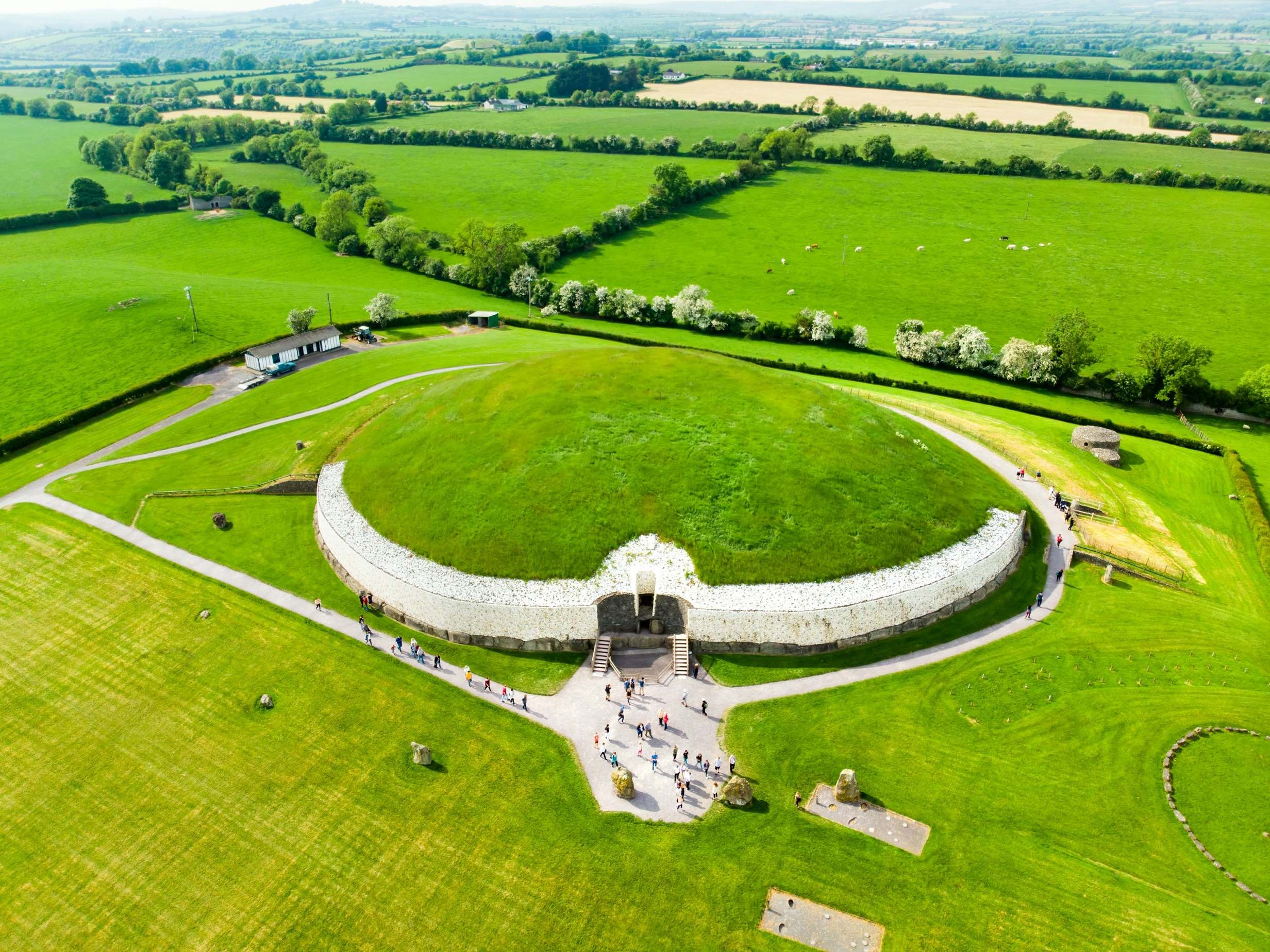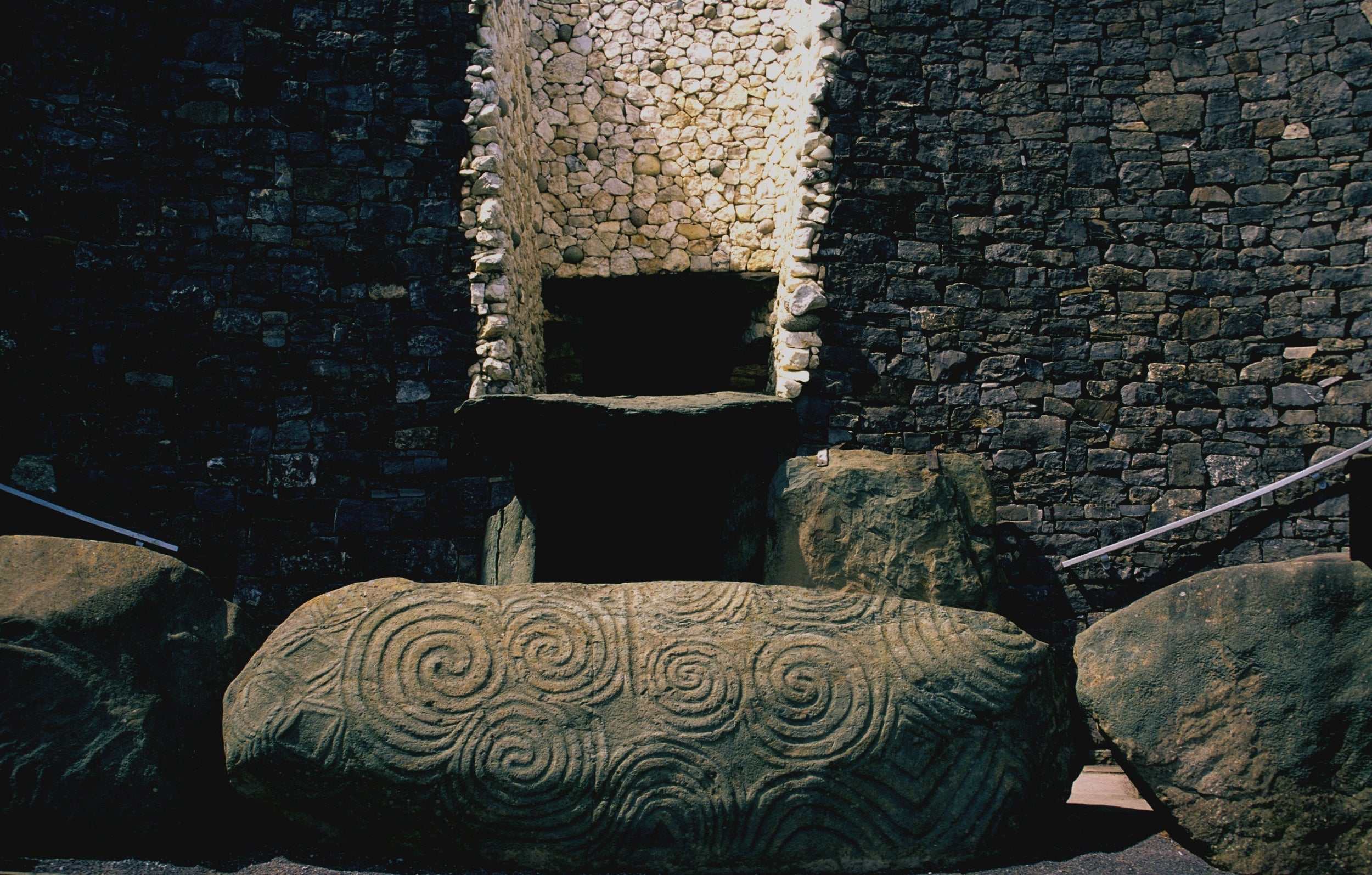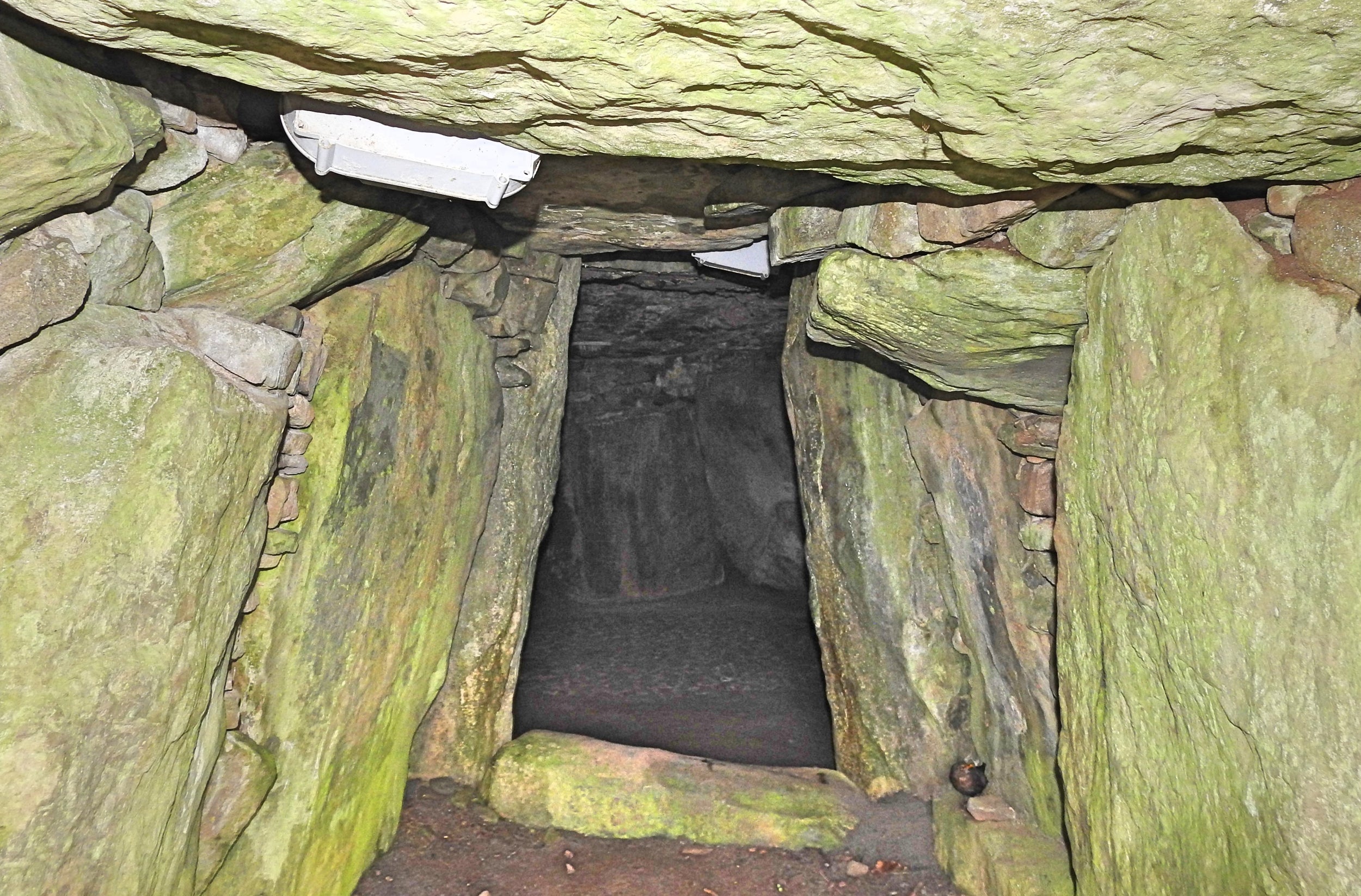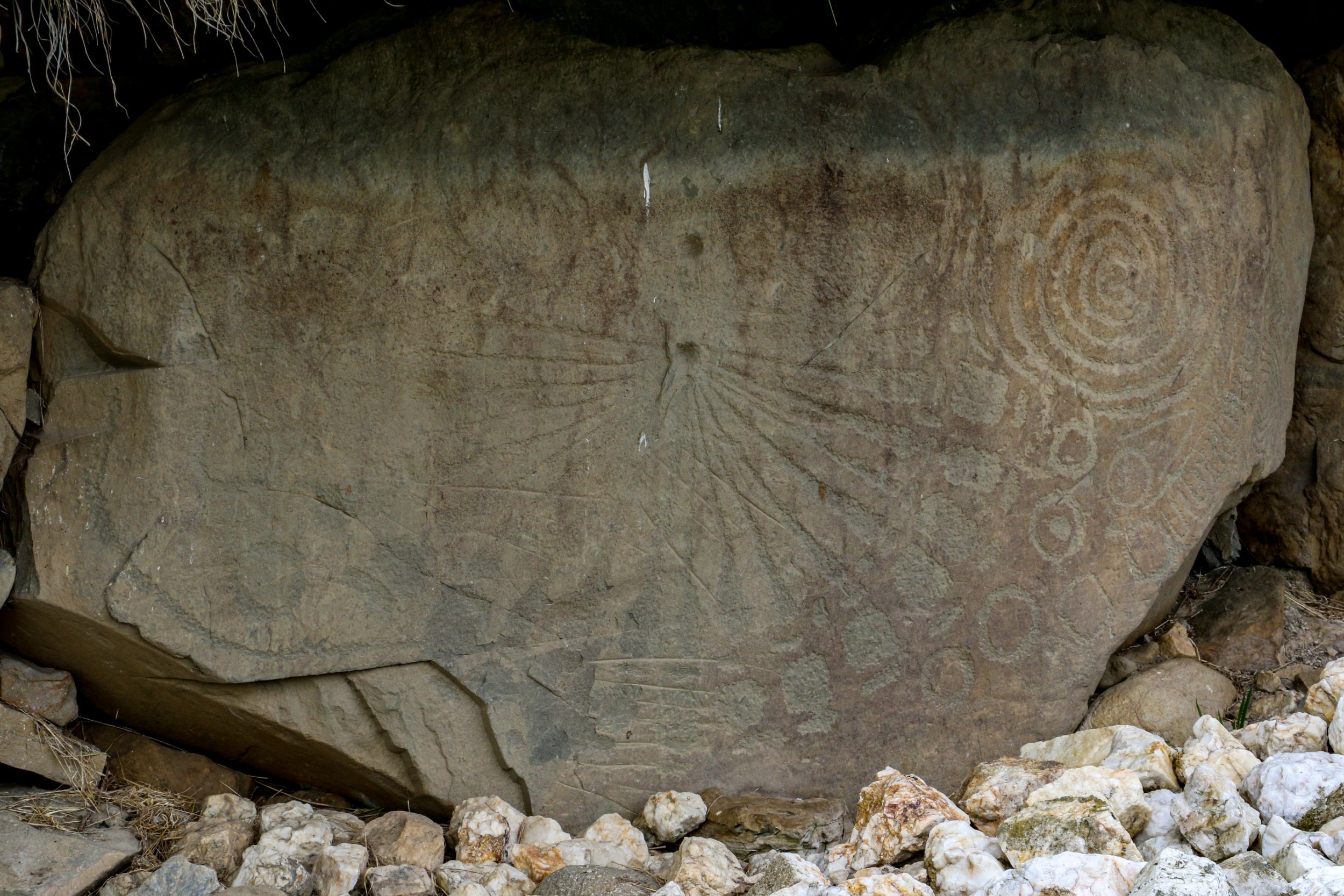Unearthing the ancient ‘pharaohs’ of the Emerald Isle
From elaborate burials to family affairs, new DNA analysis suggests that Irish kings may have had more in common with their Egyptian counterparts, writes James Gorman

The vast Stone Age tomb mounds in the valley of the River Boyne, about 25 miles north of Dublin, are so impressive that the area has been called the Irish Valley of the Kings. And a new analysis of ancient human DNA from Newgrange, the most famous of the mounds in Ireland, suggests that the ancient Irish may have had more than monumental grave markers in common with the pharaohs.
A team of Irish geneticists and archaeologists reported last week that a man whose cremated remains were interred at the heart of Newgrange was the product of a first-degree incestuous union, either between parent and child or brother and sister. The finding, combined with other genetic and archaeological evidence, suggests that the people who built these mounds lived in a hierarchical society with a ruling elite that considered themselves so close to divine that, like the Egyptian pharaohs, they could break the ultimate taboos.
In Ireland, more than 5,000 years ago people farmed and raised cattle. But they were also moved, like their contemporaries throughout Europe, to create stunning monuments to the dead, some with precise astronomical orientations. Stonehenge, a later megalith in the same broad tradition as Newgrange, is famous for its alignment to the summer and winter solstice. The central underground room at Newgrange is built so that as the sun rises around the time of the winter solstice it illuminates the whole chamber through what is called a roof box.
Archaeologists have long wondered what kind of society built such a structure, which they think must have had ritual or spiritual significance. If, as the findings indicate, it was a society that honoured the product of an incestuous union by interring his remains at the most sacred spot in a sacred place, then the ancient Irish may have had a ruling religious hierarchy, perhaps similar to those in ancient societies in Egypt, Peru and Hawaii, which also allowed marriages between brother and sister.
In a broad survey of ancient DNA from bone samples previously collected at Irish burial sites thousands of years old, the researchers also found genetic connections among people interred in other Irish passage tombs, named for their underground chambers or passages. That suggests that the ruling elite were related to one another.
A Holy Place
Daniel G Bradley, a specialist in ancient DNA at Trinity College, who leads the team with Lara M Cassidy, a specialist in population genetics and Irish prehistory also at the college, says the genome of the man who was a product of incest was a complete surprise. They and their colleagues have reported their findings in the journal Nature.
Newgrange is part of a necropolis called Bru na Boinne, or the palace of the Boyne, dating to around 5,000 years ago that includes three large passage tombs and many other monuments. It is one of the most remarkable of Neolithic monumental sites in all of Europe.

Of the site’s tombs, Bradley says, “Newgrange is the apogee”. It is not just that it incorporates 200,000 tons of earth and stone, some brought from kilometres away. It also has the precise orientation to the winter sun.
On any day, “when you go into the chamber, it’s a sort of numinous space, it’s a liminal space, a place that inspires a sort of awe”, Bradley says.
That a bone recovered from this spot produced such a genomic shocker seemed beyond coincidence. This had to be a prominent person, the researchers reasoned. He wasn’t placed there by accident, and his parentage was unlikely to be an accident.
“Whole chunks of the genome that he inherited from his mother and father, whole chunks of those were just identical,” Bradley says. The conclusion was unavoidable: “It’s a pharaoh, I said, it’s an Irish pharaoh.”
I think it’s part of the wave of the future about how ancient DNA will shed light on social structure, which is really one of its most exciting promises
He and his colleagues had not gone looking for children of incest. They were analysing ancient bones to sequence 42 genomes of Neolithic Irish farmers as part of a project to reconstruct the entire genetic history of Ireland.
The researchers sampled DNA from human remains from the four kinds of burial in Ireland, from the simplest to the most elaborate. They used techniques similar to those that for-profit companies now use to help people discover unknown relatives and ancestral connections. This involves looking for extended chunks of DNA that are common to different samples, rather than comparing the average differences in individual genes.
“It’s like looking at the sentences rather than the letters,” Bradley says.
The researchers sequenced four full genomes. The others, as is common in this kind of research, were partial.
Signs of a Hierarchical Society
David Reich of Harvard University, one of the ancient DNA specialists who has tracked the grand sweep of prehistoric human migration around the globe, and was not involved in the research, called the journal article “amazing”.
“I think it’s part of the wave of the future about how ancient DNA will shed light on social structure, which is really one of its most exciting promises,” he says, although he had some reservations about evidence that the elite were genetically separate from the common people, a kind of royal family.

Bettina Schulz Paulsson, a prehistoric archaeologist at the University of Gothenburg in Sweden, says the researchers’ findings that suggest a religious hierarchy is a “very attractive hypothesis”.
Last year, Schulz Paulsson proposed that megalithic technology, which first appeared in Europe about 6,500 years ago, originated in Brittany and spread by maritime means along the coasts of the Atlantic and thus to England and Ireland. About 35,000 of these monuments are known, and the most famous draw crowds – sometimes for the history and archaeology, and sometimes for the spiritual power attributed to them.
Schulz Paulsson says that essentially nothing is known about the structure of the societies that built the early megaliths. But the technology and the societies that used it developed over time.
Newgrange dates to about 5,500 years ago, around 1,500 years after the first European megaliths appeared. The creation of these monuments occurred after agriculture appeared in Europe, brought by a vast migration of Anatolian farmers, starting about 9,000 years ago. Reich is one of the researchers who has documented how these farmers, whose genetic profile is distinct from European hunter-gatherers, gradually settled Europe.
What exactly happened between them and Indigenous hunter-gatherers is not known, but gradually, judging by modern and ancient DNA, those hunter-gatherers disappeared. Today, after many waves of migration, their DNA is found only as a faint remnant in modern populations.
Genetic data may help delineate social structures of specific communities so lost in deep time that they have been almost impossible to decipher
The Irish genomes show that the people in these tombs were descendants of Anatolian farmers. The researchers found a trace of the Indigenous population of Ireland in two individuals, Bradley says. Though this is a small amount, it does show, Bradley says, that there was interaction between the farmers and hunter-gatherers.
The paper is rich with other detail, including the discovery that an infant had Down syndrome. The authors believe this is the oldest record of Down syndrome. Chemical tests of the bone also showed that the infant had been breastfed, and that he was placed in an important tomb. Both of those facts suggest that he was well cared for, in keeping with numerous other archaeological finds of children and adults with illnesses or disabilities who were supported by their cultures.
Cassidy says they also found DNA in other remains that indicated relatives of the man who was a child of royal incest were placed in other significant tombs.
“This man seemed to form a distinct genetic cluster with other individuals from passage tombs across the island,” she says.

She says “we also found a few direct kinship links”, ancient genomes of individuals who were distant cousins. That contributed to the idea that there was an elite who directed the building of the mounds. In that context, it made sense that the incest was intentional. That’s not something that can be proved, of course, but other societies have encouraged brother-sister incest, and not only the Egyptians. Brothers married sisters in ancient Hawaii, and in Peru among the Incas.
“The few examples where it is socially accepted,” she says, are “extremely stratified societies with an elite class who are able to break rules.”
Relying on Folklore
Reich says the research has implications beyond the specific findings. He says it signifies a new direction in ancient DNA studies, moving beyond discoveries of broad patterns of prehistoric human migration. Now, genetic data may help delineate social structures of specific communities, like that in Ireland, so lost in deep time that they have been almost impossible to decipher.
Reich says he has reservations about one of the paper’s conclusions. The researchers reported that members of the elite, those found in the most elaborate tombs, were closer to one another genetically than they were to people found in simpler burials. But, Reich says, the simpler burials and the higher-status burials were separated by hundreds of years, so the comparison wasn’t contemporaneous. Perhaps the genetic makeup of the society, which was small in number, changed over a few centuries. Bradley acknowledges that this was an alternative explanation.
The final piece of the puzzle that the researchers report is neither archaeological nor genetic, but folkloric. An account of Irish place names written around 1100, the authors write, tells a tale of a King Bressal, who slept with his sister. The result was that Dowth, the burial mound next to Newgrange, was called Fertae Chuile, or the Mound of Sin.
The idea that a folk memory could preserve history 4,000 years old may seem preposterous, but there were also folk tales that gods built the passage tombs to affect the solar cycle. And yet Newgrange, with its solar alignment, was covered by earth during the Middle Ages. It was excavated, and the orientation to the winter solstice discovered at the beginning of the 20th century.
The myths may be muddled, but the tale of the solar cycle had some basis in fact, and so, it may be, did the story of royal incest.
© The New York Times
Join our commenting forum
Join thought-provoking conversations, follow other Independent readers and see their replies
Comments
Bookmark popover
Removed from bookmarks